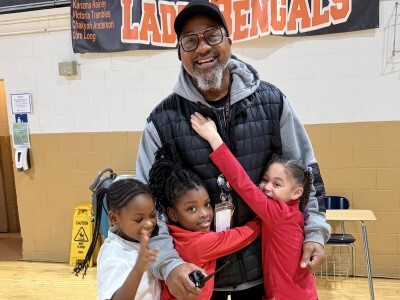Common Planning for Teachers: An Interview with Math Director Don Mundt
Topics

When educators design and create new schools, and live next gen learning themselves, they take the lead in growing next gen learning across the nation. Other educators don’t simply follow and adopt; next gen learning depends on personal and community agency—the will to own the change, fueled by the desire to learn from and with others. Networks and policy play important roles in enabling grassroots approaches to change.
Math teachers at Nathan Hale Middle School in Norwalk, Conn., created space for common planning time to share instructional strategies and ask for help.
Making the shift to a student-centered learning model means that schools are reimagining every aspect about how individual students learn. A big part of that change is finding more time for common planning for teachers within a school's master schedule, which is often built around traditional time blocks in which periods are the same length.

About the Teach to One: Math program at Nathan Hale Middle School.
We have about 600 students here in Teach to One. We utilize two math labs that each have up to five modality stations. There are 11 staff members who are constantly moving in and out of these centers. That means we rely on the people who were in here before you to leave the lab in good standing. That's all part of the team aspect and the need for common planning for teachers.
On what common planning for teachers looks like before and after moving to a student-centered learning model.
Four years ago, when I was teaching in a traditional setting, my common planning time was about three minutes in between classes when I'd pass another teacher in the hallway.
In our first year of implementing Teach to One, we had 42 minutes of common planning every day. I was learning right along with the staff. Everything from the scheduling to managing the agenda to fostering a culture of engagement among the staff members, our common planning meetings just kind of blossomed.
In the second year, we expanded to all three middle school grades so we met as a larger group, because the program had expanded to all three middle school grades. That allowed us to be more strategic about sharing. We used our time to create a Live Investigation Library and lesson-planning templates. And really it was nice to just share instructional strategies and ask for help where in the past we never had that opportunity. Just having the time to have these discussions is invaluable. Any teacher you talk to in this program who's been doing it with fidelity will tell you it would be very difficult to go back to a traditional classroom.
Making common planning for teachers work within the school's master schedule.
We actually had a team of five teachers this year who volunteered to do what we refer to as "flex time." It's an idea that was suggested by our superintendent when we first implemented Teach to One. We need to have planning time before each day's sessions starts, but because our master schedule has math during our first academic block, our five volunteer teachers actually come in earlier and do their planning then. Then, at the end of the day, they go home one period early.
What advice would you give to a first-year Teach to One teacher?
You're the teacher, but you're also a facilitator of learning. You need to be able to engage students in learning as opposed to just telling them.
You might have to be able to work outside of your comfort zone. You might need to be able to teach in a way that you did not experience when you were a student. You may need to look for strategies that will be able to somehow engage students in things that are more relevant or familiar to them—whether that is something based on their prior knowledge and experience or that taps into their interests.
For example, recently I was doing a lesson on measures of central tendency and instead of just giving my students a set of numbers, we read an article about the world record for deep diving and learned that it's now 22 minutes and 22 seconds. My question to them was, how long do you think you can hold your breath? So we held our breath in class and collected the data instead of giving them a predetermined worksheet which is always about lemonade or trees in a forest. Because this was something they could actually be a part of, it increased their engagement.
Photo at top: Math teachers of Teach to One at Nathan Hale Middle School pose in costume on Halloween last year. Math director Don Mundt, masked, is pictured front and center. (Courtesy of Don Mundt)




